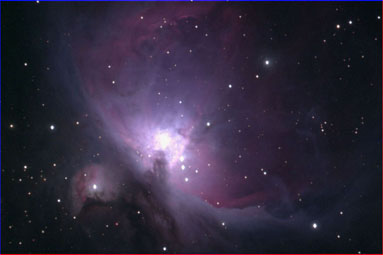

IDL is a very powerful number crunching tool which is used extensively in
much of the professional astronomy community. Since it is a serious array handling
piece of S/W it is ideally suited
for dealing with images and much of my image crunching and manipulations is done
using IDL.
IDL is actually an extensible programming language so IDL user's build general purpose
routines ( sometimes ) which are then incorporated into program after program.
With IDL, a FITS image can be imported and processed as real data for study or stretched
and manipulated and output as a TIF or GIF image for pictorial work. Image studies for
photometry can be performed, camera noise studies can be routinely carried out, images
can be stacked or ratioed or asssembled into pseudo color mappings all using the many
many built in numerical processing routines.
IDL is well suited for those wanting to do quantitative work and knowing how to do their own image crunching. With IDL, if you build your own routines you know exactly how the data was treated during processing. The original data is not disrupted by an unknown algorithm and the IDL processing is repeatable. If you need to process R,G,B images and treat them all exactly alike to maintain color fidelity, then IDL is the ideal tool. If you need to process 500 images for a photometric study, IDL is the tool to use.
For less than scientific image processing requirements, but for those who want to do
much more than just make a pretty picture I heartilly recommend that you
look at the capabilities in MIRA by AXIOM. There are currently three flavors
of MIRA available ranging from the very capable MIRA AL to the super capable MIRA PRO.